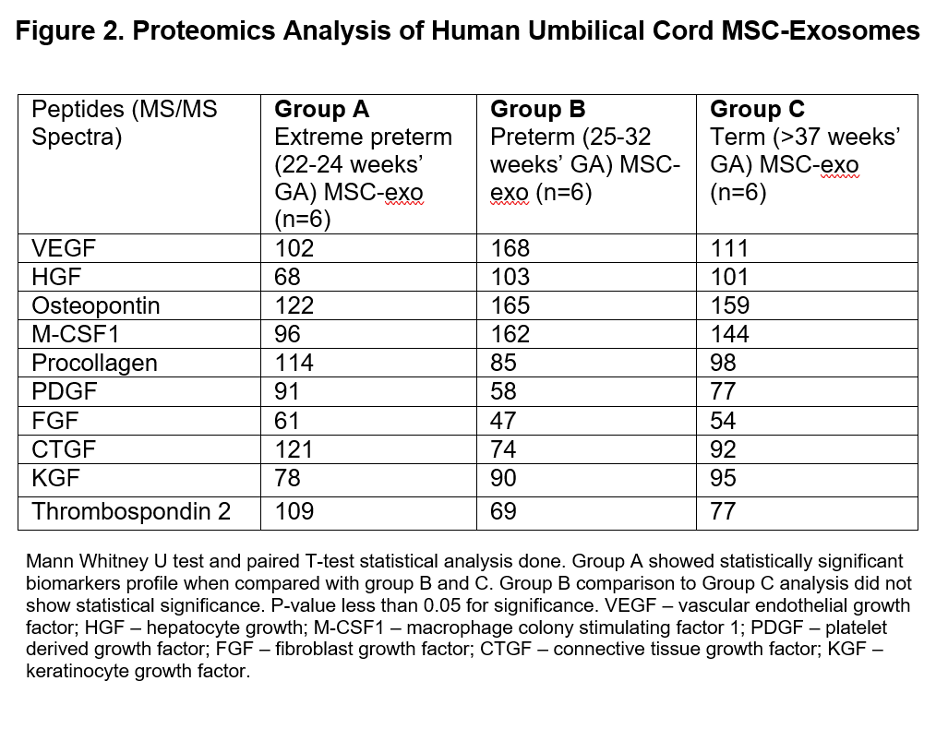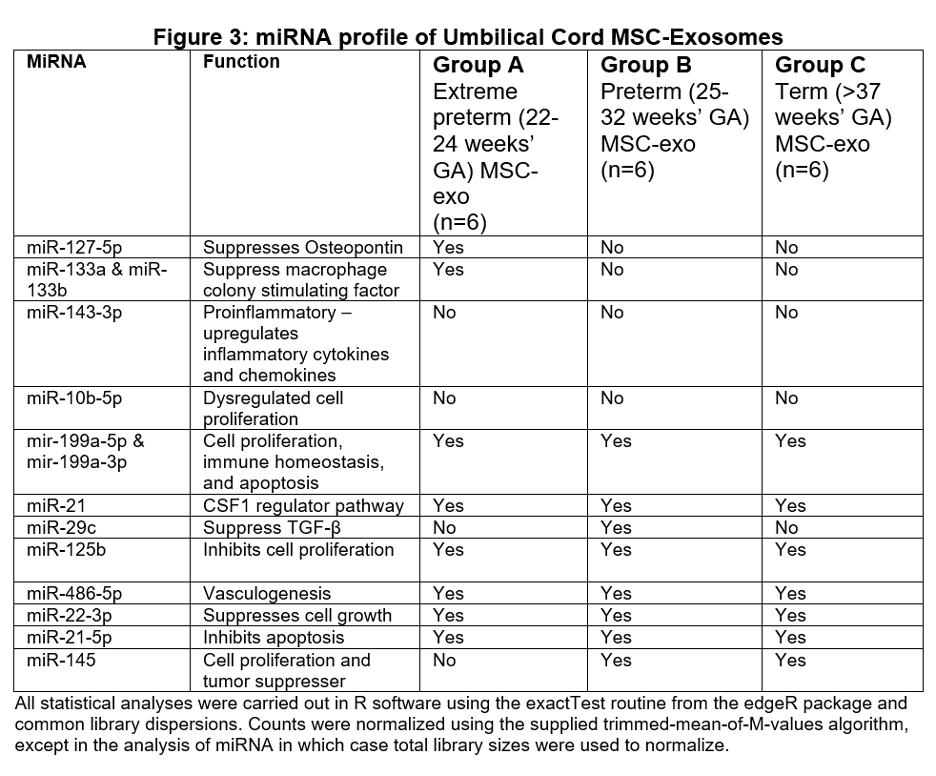Neonatology
Session: Neonatal Pulmonology - Clinical Science 5: New-Old ideas, Stem Cells
577 - Regulatory Profile of Human Extremely Preterm Umbilical Cord Derived Mesenchymal Stem Exosomes
Monday, May 6, 2024
9:30 AM - 11:30 AM ET
Poster Number: 577
Publication Number: 577.2986
Publication Number: 577.2986
- AQ
Amina Qayum, MD (she/her/hers)
Fellow Physician
University of California, Irvine, School of Medicine
Orange, California, United States
Presenting Author(s)
Background: Human umbilical cord derived mesenchymal stem cells (MSCs) have shown promising results in neonatal chronic lung disease also known as Bronchopulmonary dysplasia (BPD). BPD is a chronic debilitating disease of extremely preterm infants caused by oxygen toxicity, inflammation, and ventilator use leading to arrested alveolar development. We have published about partial efficacy of human term umbilical cord MSCs and their exosomes (MSC-exo) in experimental murine BPD model. No study has looked at extremely preterm MSC-exo harvested from 22-24 weeks’ gestational age (GA) deliveries. We hypothesized that extremely preterm MSC-exo will lack biologic efficacy given exposure of these stem cells to similar antenatal and postnatal conditions which led to preterm delivery and a predisposition to BPD. This will lead to determination whether autologous MSCs can be used in these extreme preterm infants.
Objective: Our objective was to determine the biologic efficacy of exosomes derived from human umbilical cord derived mesenchymal stem cells of extremely preterm infants (born between 22-24 weeks gestational age).
Design/Methods: The study was approved by the Institutional IRB. The umbilical cords collected from three groups as follows.
Group A: Extremely preterm (22-24 weeks’ GA)
Group B: Preterm (25-32 weeks’ GA)
Group C: Term (>37 weeks’ GA)
The umbilical cord Wharton’s jelly plastic adherent cells harvested, propagated, and immunodepleted to obtain MSCs. MSC duplication and differentiation time assessed between all three groups. MSC-exo generated per our published protocols and proteomics analysis done to determine secreted biomarkers. MSC-exo microRNA (miRNA) levels determined using TaqMan RNA kits per manufacturer protocols.
Results: Group A showed a much shorter duplication time and differentiation time (adipocytes and osteocytes) when compared with other groups (Figure 1). Proteomics analysis identified significantly lower lung vascular and epithelial injury preventive biomarkers concentration in Group A MSC-exo fraction compared to other groups MSC-exo fraction (Figure 2). Similarly, Group A MSC-exo fraction was deficient in lung injury and repair miRNAs when compared with other groups MSC-exo fraction (Figure 3). All these results were statistically significant.
Conclusion(s): Extremely preterm delivery alters the biologic potential of human preterm umbilical cord derived MSCs with lack of protected biomarkers and miRNAs involved in lung injury and repair.
.png)


